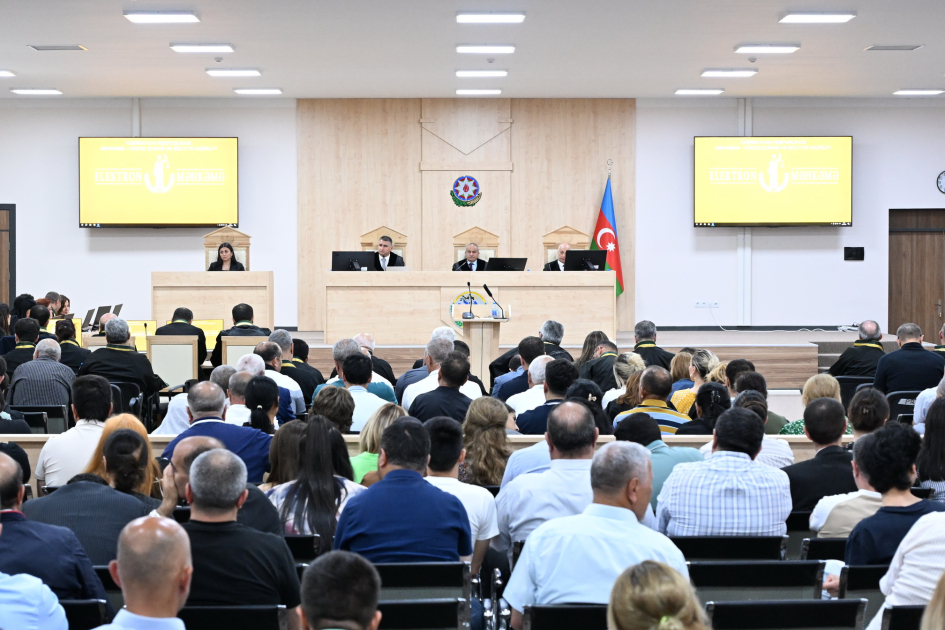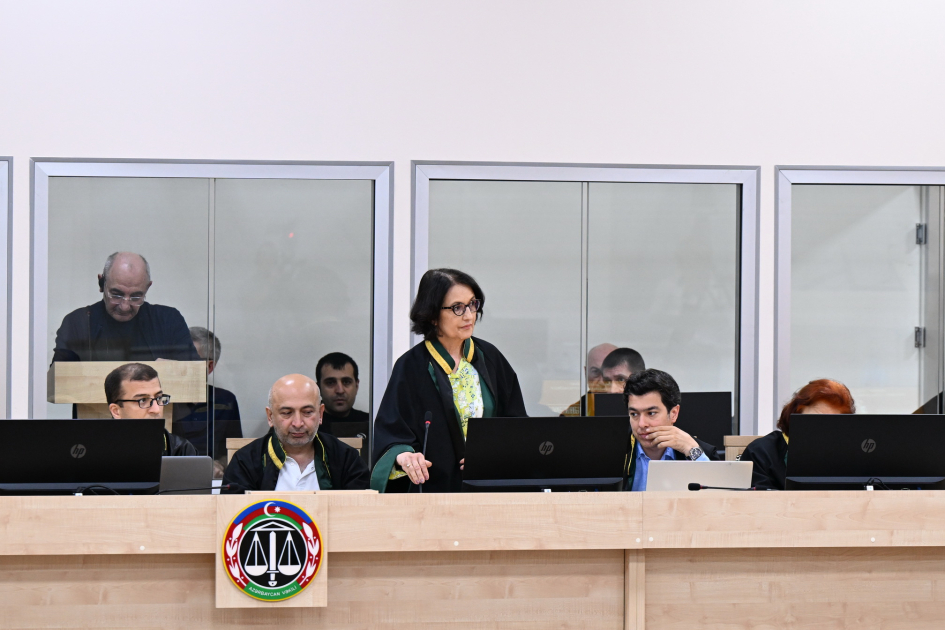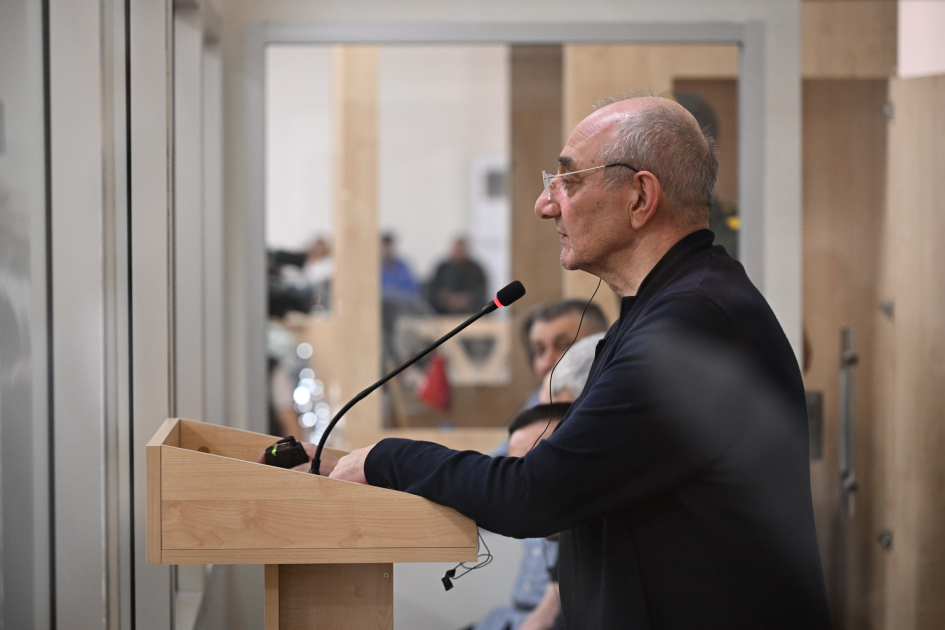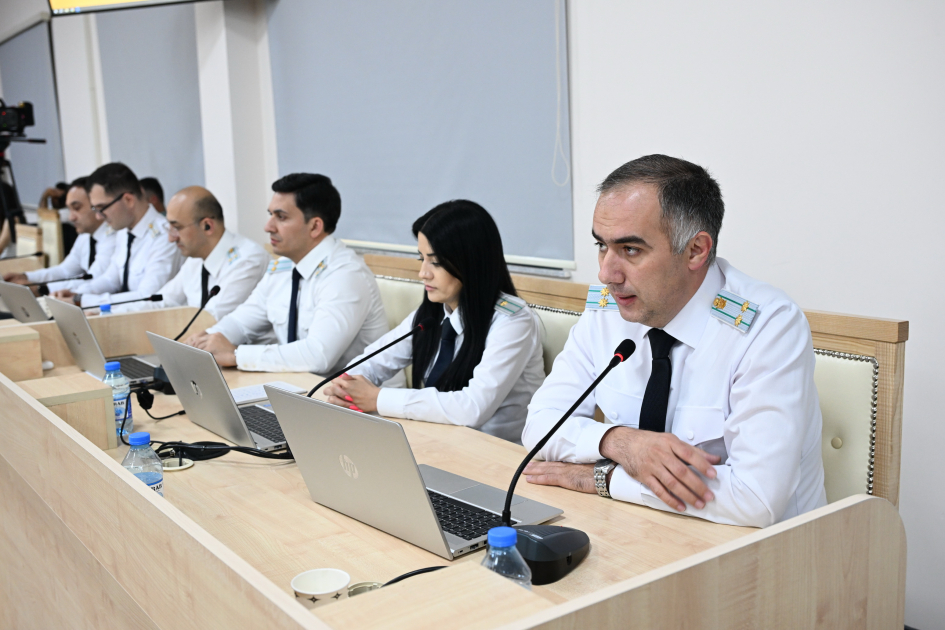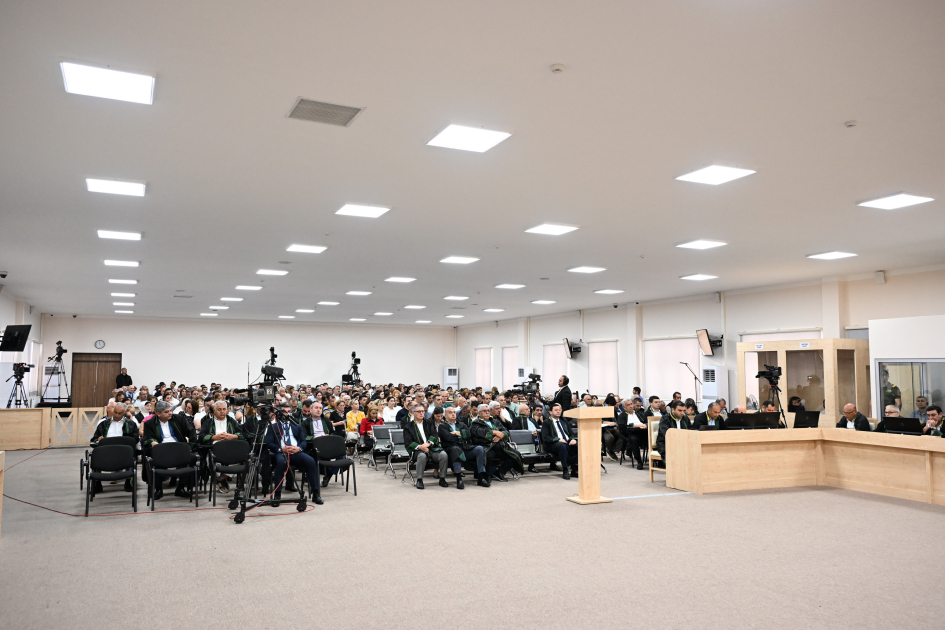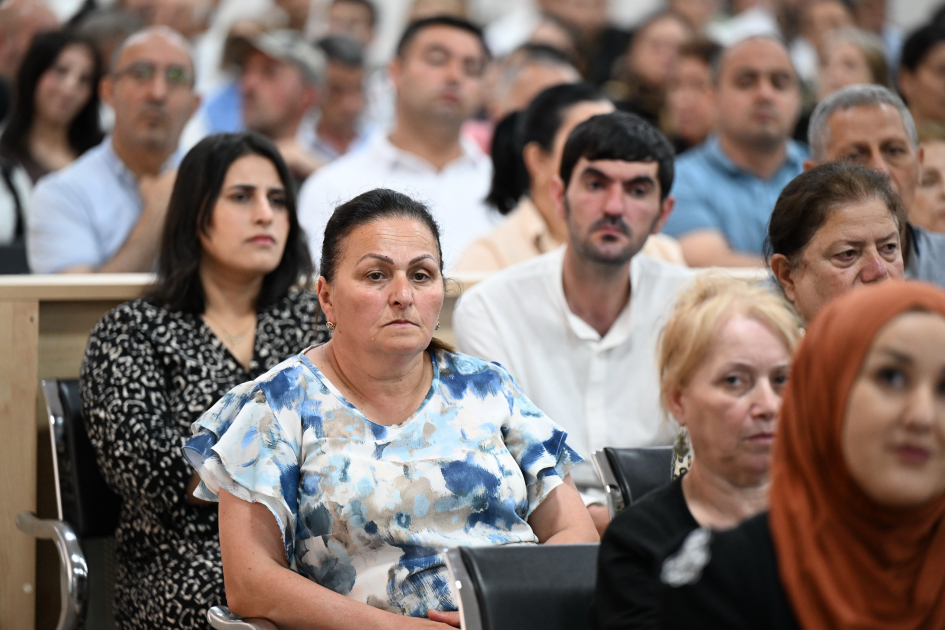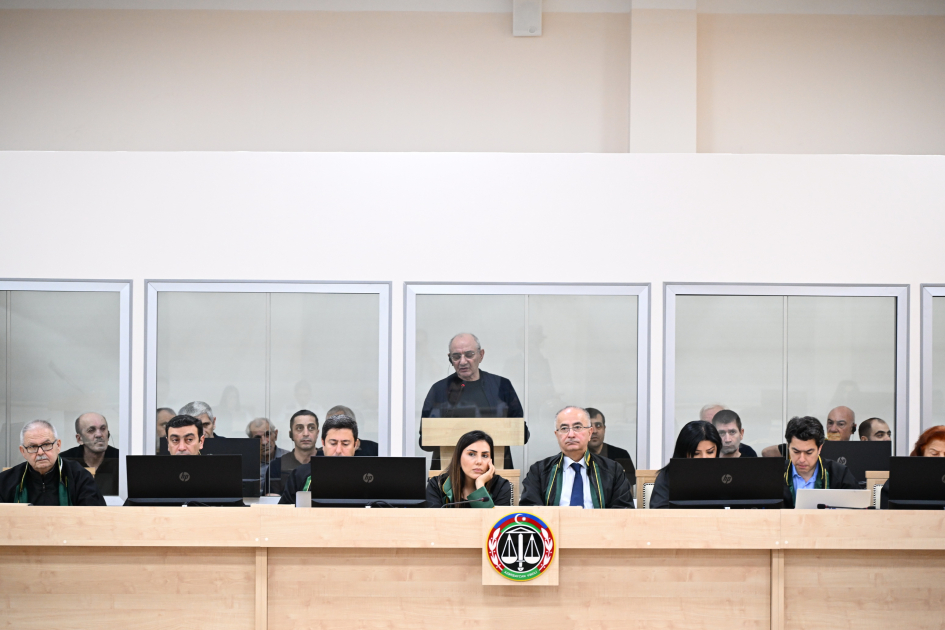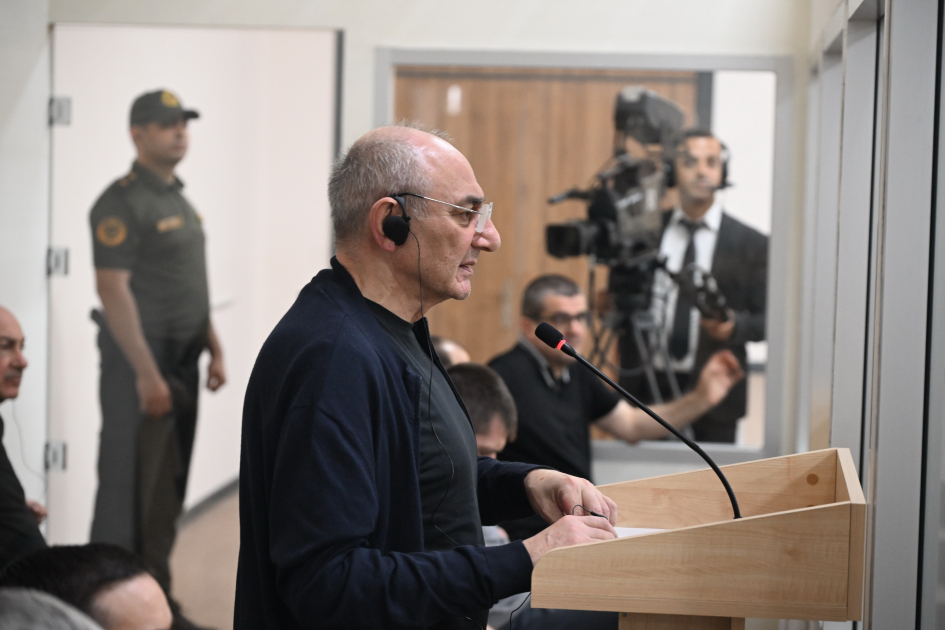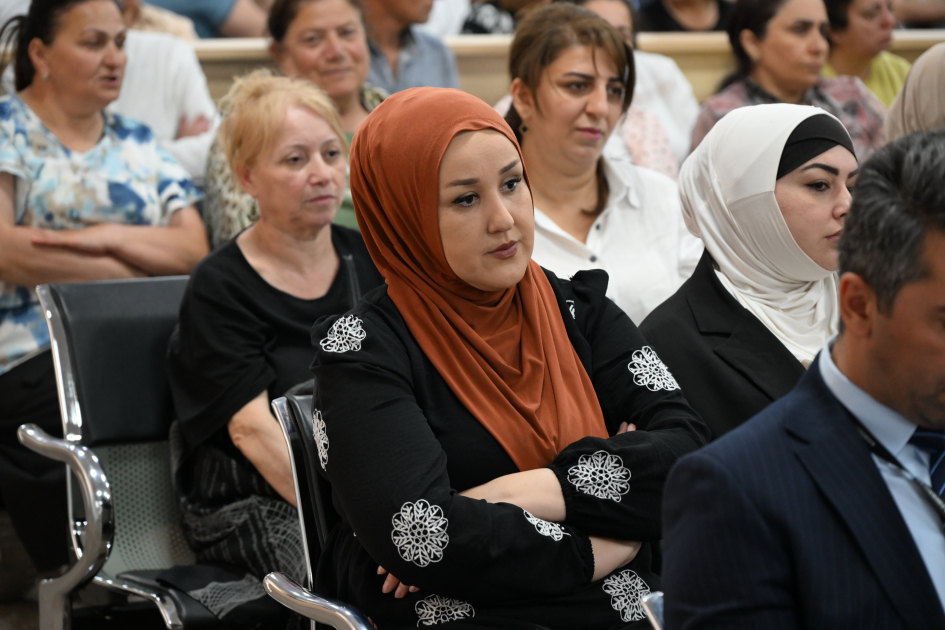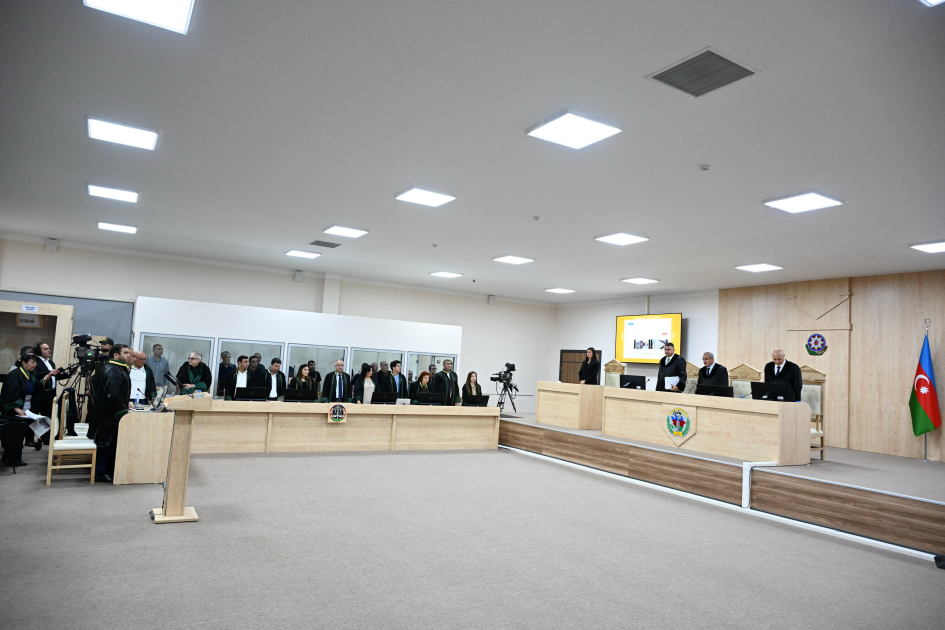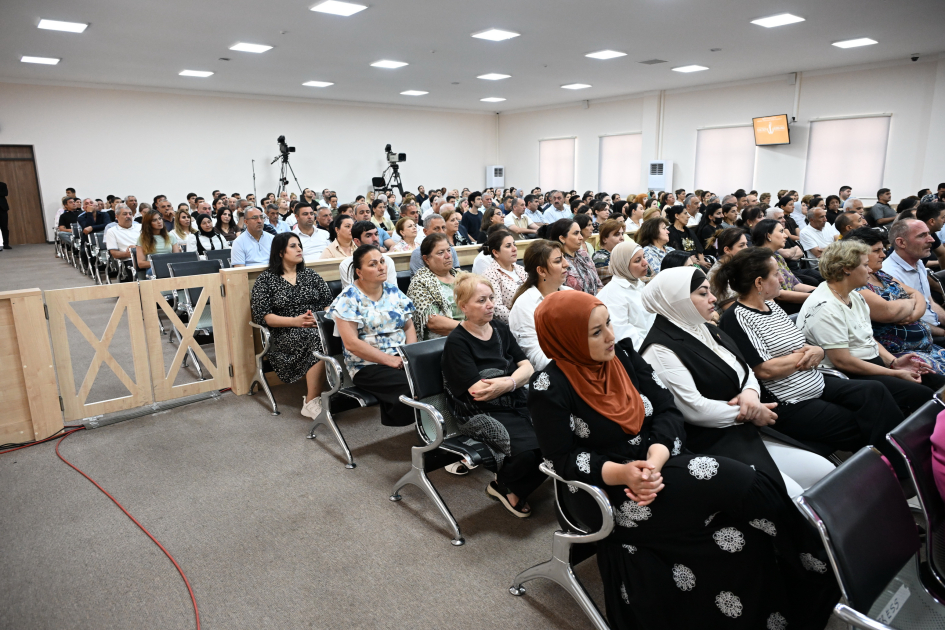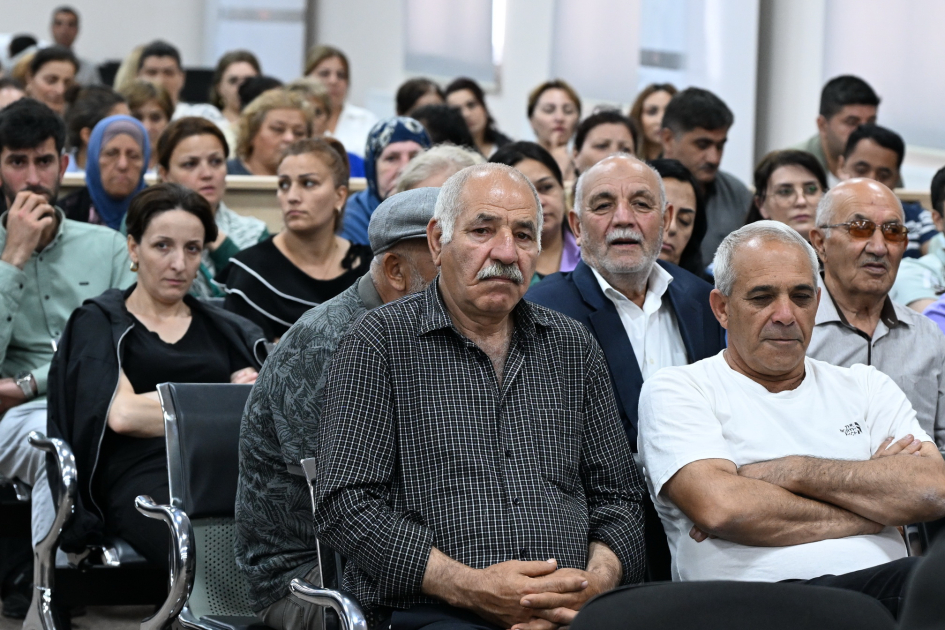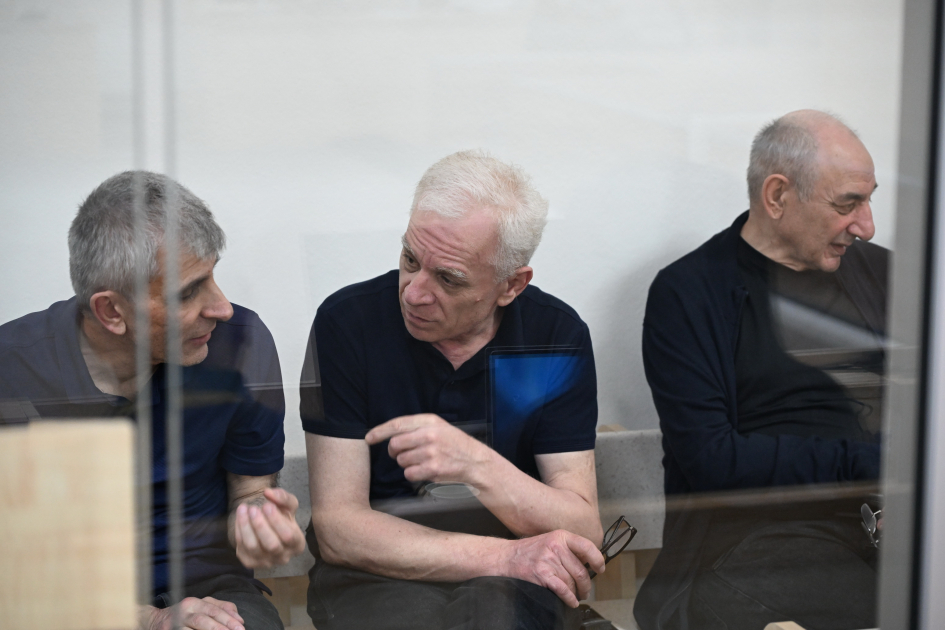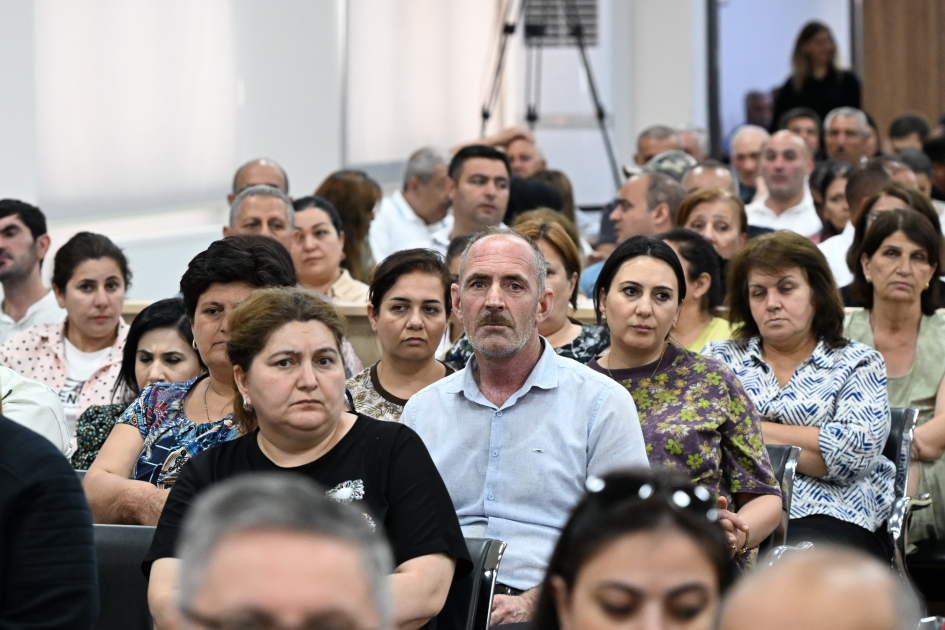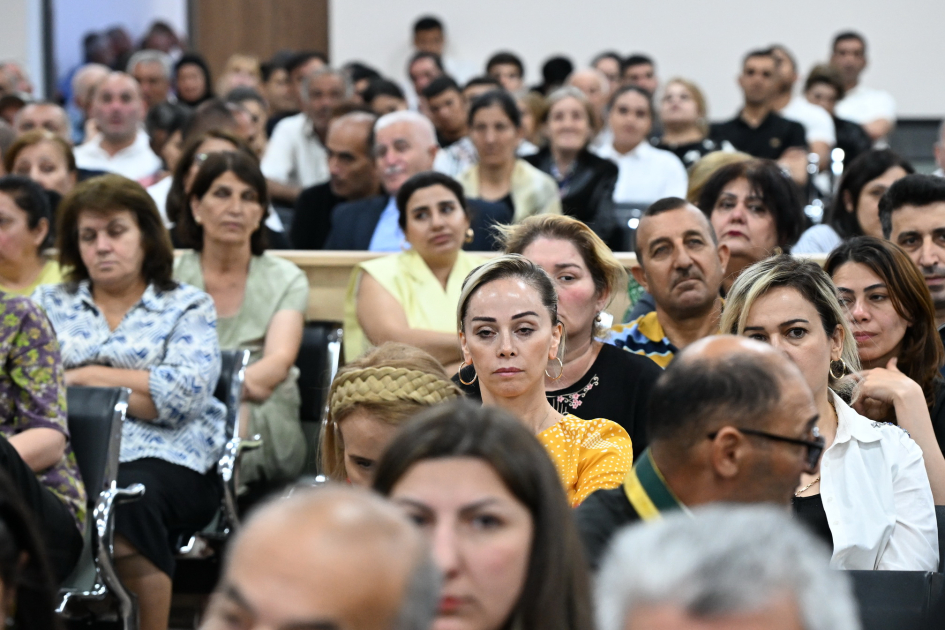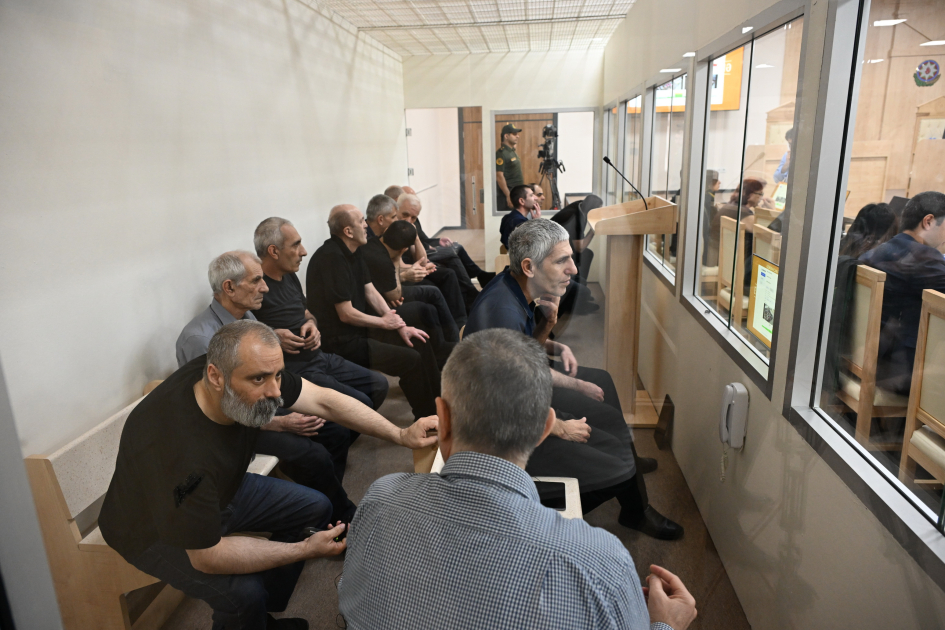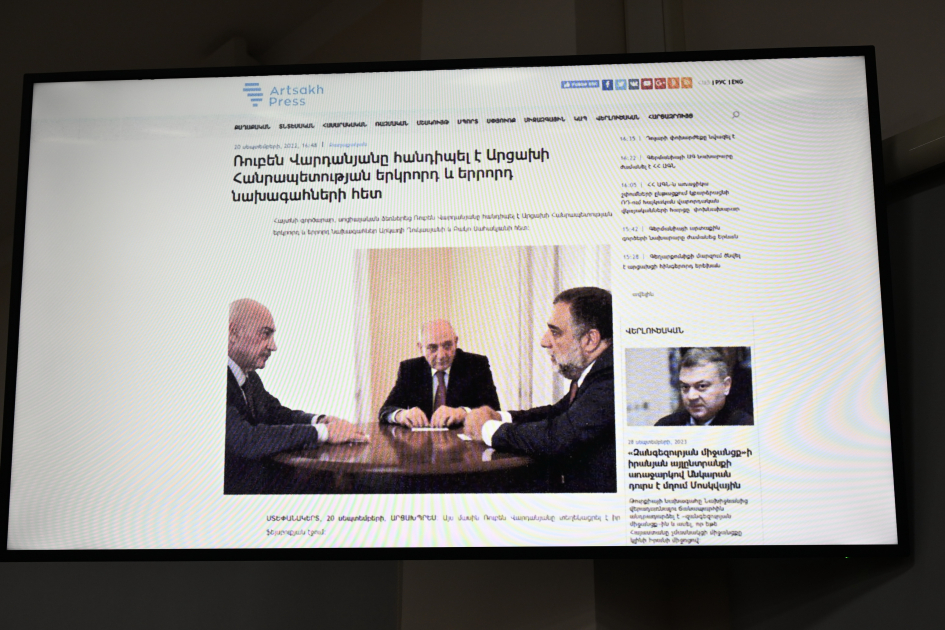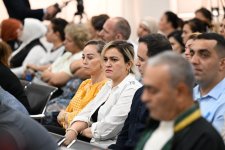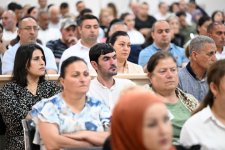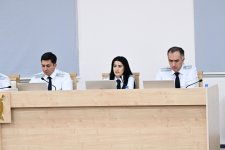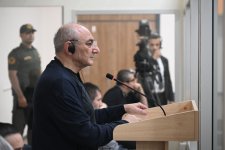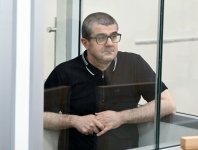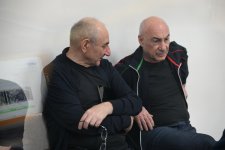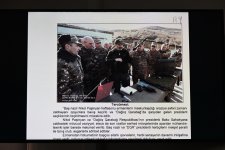BAKU, Azerbaijan, June 20. The open court session continued on June 20 at the Baku Military Court in the criminal case against Armenian citizens Arayik Harutyunyan, Arkadi Ghukasyan, Bako Sahakyan, Davit Ishkhanyan, David Babayan, Levon Mnatsakanyan, and others. They stand accused of crimes against peace and humanity, including war crimes, preparing and waging aggressive war, genocide, violations of the laws and customs of war, terrorism, financing terrorism, forcible seizure and retention of power, and other grave offenses arising from Armenia’s military aggression against Azerbaijan, Trend reports.
The court session, presided over by Judge Zeynal Aghayev, with Judges Jamal Ramazanov and Anar Rzayev (alternate judge Gunel Samadova), ensured that each defendant had legal representation and interpretation in their native language. The session was attended by the accused, their lawyers, several victims and their legal successors and representatives, as well as state prosecutors.
At the hearing, Bako Sahakyan, who served as the “head” of the illegal entity created on Azerbaijan’s sovereign territories once occupied by Armenia between 2007 and 2020, answered questions from state prosecutor Tarana Mammadova.
The defendant stated that in 2007, the so-called “defense minister” of the illegal regime was Seyran Ohanyan, who was later appointed Chief of the General Staff of the Armed Forces of the Republic of Armenia. He was succeeded by General Movses Hakobyan, also later appointed Chief of the General Staff. Afterwards, the position of “defense minister” in the so-called regime was held by Levon Mnatsakanyan, followed by Karen Abrahamyan, Jalal Harutyunyan, and Mikael Arzumanyan. Sahakyan noted that in the so-called regime, the roles of “defense minister” and “commander of the army” were combined and held by one person.
Sahakyan stated that the “leadership” of the illegal entity had no authority over the “armed forces.” During his tenure as “head” of the regime, Armenia’s defense ministers and chiefs of the general staff visited the then-occupied sovereign territories and met with him.
At the trial, a 2015 statement by Sahakyan, published in the Armenian press, was presented. He had said: “Ultimately, we strive to unite with Armenia. We live with this great desire, but the time has not yet come.” When asked about this, Sahakyan confirmed making the remarks and added: “I stated that when the time comes and the conditions are more favorable, we will implement this other objective as well,” referring to the unification of Azerbaijan’s formerly occupied territories with Armenia.
Regarding Azerbaijani captives and hostages, Sahakyan claimed that during the early years of the war until 1994, some were held by Armenian commanders. He alleged that once “institutions” of the so-called regime were established, cases of torture and inhumane treatment decreased and eventually ceased.
He admitted that the so-called regime received weapons from the Armenian Armed Forces but claimed its “army” did not possess destructive missile systems such as “Iskander-M” or “Tochka-U.” However, he acknowledged that one air defense military unit, including an “S-300” missile system, was deployed in Shusha. He added that placement of these missiles did not require his direct approval, as so-called “local administrative bodies” had consented to their deployment.
On the 2016 April clashes, Sahakyan disclosed that operations were led by then Armenian Defense Minister Colonel-General Seyran Ohanyan, Chief of the General Staff Colonel-General Yuri Khachaturov, and Lieutenant-General Levon Mnatsakanyan, commander of the largest military formation of the Armenian Armed Forces (the so-called regime’s “army”). He said Defense Minister Ohanyan was among the first to contact him during the clashes and that he received operational updates from the “defense army.” Sahakyan requested urgent medical aid and additional ambulances, and Ohanyan assured him the Armenian Prime Minister would soon contact him. Sahakyan later spoke with Prime Minister Hovik Abrahamyan and other officials, and his requests were generally fulfilled. He also had conversations with Chief of the General Staff Yuri Khachaturov during the clashes.
Sahakyan noted that the results of the April battles were jointly discussed by Armenia and the so-called regime.
The court examined documents showing Sahakyan’s participation in a session of the investigative commission established by the Armenian National Assembly after the April battles. The commission was chaired by Andranik Kocharyan, Chairman of the Armenian Parliament’s Standing Committee on Defense and Security Issues. Sahakyan confirmed the invitation and said the commission could not compel his attendance. He provided comprehensive answers during the session.
He explained the investigative commission was established because the operation in question was carried out by the Armenian Armed Forces.
The court reviewed Sahakyan’s December 2019 visit with Armenian Prime Minister Nikol Pashinyan to military units stationed in then-occupied Azerbaijani territories. Sahakyan justified the visit by noting that the Prime Minister, as top official of the Armenian Armed Forces, often visited armed formations.
Sahakyan confirmed that foreign nationals participated in combat against Azerbaijan but denied they were mercenaries, saying they came from a wide range of countries—from the Middle East to Canada—entering occupied Azerbaijani territories via Armenia.
Regarding territory mining during his tenure as “head” of the illegal entity, Sahakyan said those carrying out the mining were not obligated to inform him, as it was done within an approved work plan.
On illegal exploitation of natural resources in the occupied territories, Sahakyan claimed no direct relationship with the company exploiting the gold deposit in Kalbajar, noting only that a company registered in Armenia operated there. He admitted enthusiasm for the mining proposal due to the large-scale investments involved.
He stated that “Karabakh Telecom” was established with major investments from a Lebanese businessman.
Sahakyan said he had only superficial knowledge of the July 12, 2020, Tovuz clashes.
Regarding the 44-day war beginning September 27, 2020, Sahakyan said that although a “former leader” at the time, he participated in discussions on “cessation of military operations” and met with Arayik Harutyunyan as part of those talks.
The court reviewed evidence of a meeting of former presidents of the so-called regime and Armenia, including Levon Ter-Petrosyan, Robert Kocharyan, Serzh Sargsyan, Arkadi Ghukasyan, and Bako Sahakyan. Sahakyan confirmed meetings with former Armenian presidents Robert Kocharyan and Serzh Sargsyan in Karabakh, and a March 2021 meeting with Nikol Pashinyan.
Another document covered a September 20, 2022, meeting among Armenian citizen Ruben Vardanyan (prosecuted in Azerbaijan), Arkadi Ghukasyan, and Sahakyan, where topics included “security” of the so-called regime, preserving “Karabakh as Armenian land,” and its “development.” Sahakyan confirmed that “remaining Armenian land” was a strategic objective, meaning the continuation of the regime’s existence and ultimate unification with Armenia.
The next court hearing is scheduled for June 21.
15 defendants of Armenian origin are accused in the criminal case concerning numerous crimes committed during the aggressive war waged by the Armenian state—including the aforementioned criminal association—on the territory of Azerbaijan, in violation of domestic and international legal norms. These crimes were committed for the purpose of military aggression against Azerbaijan and were carried out under the direct leadership and participation of the Armenian state, officials of its state institutions, its armed forces, and illegal armed formations, through their written and verbal orders, instructions, and guidelines; material, technical, and personnel support; centralized management; as well as under strict control and under the leadership and direct or indirect participation of Robert Sedraki Kocharyan, Serzh Azati Sargsyan, Vazgen Mikaeli Manukyan, Vazgen Zaveni Sargsyan, Samvel Andraniki Babayan, Vitali Mikaeli Balasanyan, Zori Hayki Balayan, Seyran Musheghi Ohanyan, Arshavir Surenovich Garamyan, Monte Charles Melkonyan, and others.
The following individuals—Arayik Vladimiri Harutyunyan, Arkadi Arshaviri Ghukasyan, Bako Sahaki Sahakyan, Davit Rubeni Ishkhanyan, David Azatini Manukyan, Davit Klimi Babayan, Levon Henrikovich Mnatsakanyan, Vasili Ivani Beglaryan, Erik Roberti Ghazaryan, Davit Nelsoni Allahverdiyan, Gurgen Homeri Stepanyan, Levon Romiki Balayan, Madat Arakelovich Babayan, Garik Grigori Martirosyan, and Melikset Vladimiri Pashayan—are being charged under the following articles of the Criminal Code of the Republic of Azerbaijan: Article 100 (planning, preparing, initiating, and waging a war of aggression); Article 102 (attacking persons or organizations enjoying international protection); Article 103 (genocide); Article 105 (extermination of the population); Article 106 (enslavement); Article 107 (deportation or forced displacement of population); Article 109 (persecution); Article 110 (enforced disappearance of persons); Article 112 (deprivation of liberty contrary to international law); Article 113 (torture); Article 114 (mercenary service); Article 115 (violation of the laws and customs of warfare); Article 116 (violation of international humanitarian law during armed conflict); Article 118 (military robbery); Article 120 (intentional murder); Article 192 (illegal entrepreneurship); Article 214 (terrorism); Article 214-1 (financing terrorism); Article 218 (creation of a criminal organization); Article 228 (illegal acquisition, transfer, sale, storage, transportation, and possession of weapons, ammunition, explosives, and devices); Article 270-1 (acts threatening aviation security); Article 277 (assassination of a state official or public figure); Article 278 (forcible seizure and retention of power, forcible change of the constitutional structure of the state); Article 279 (creation of armed groups not provided for by law); and other articles.

